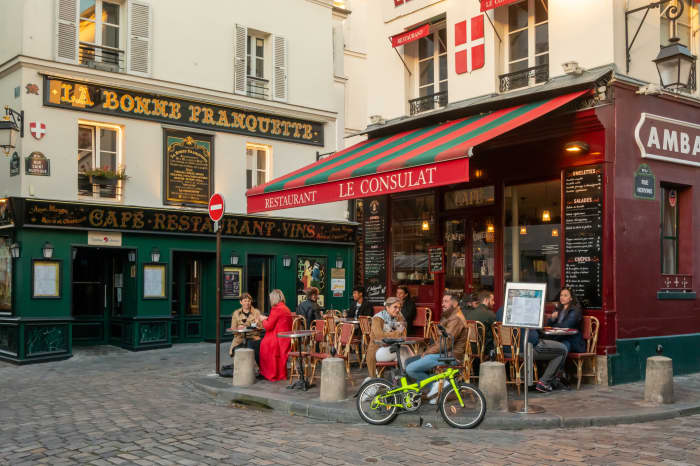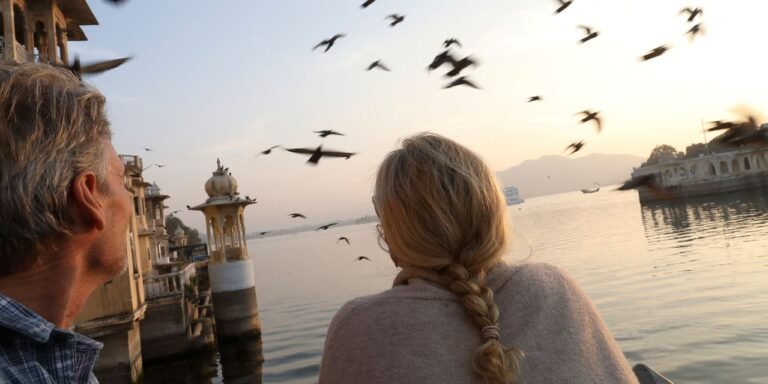This article is reprinted with permission from NextAvenue.org.
Travel for most of us falls into two categories: vacations and tours.
Vacations are the day-to-day life that you stress the most, so you arrive at your destination to relax and do as little as possible the entire time you’re there.
Travels are when you think you might be in a special place only once in your life, so you rush to try as many activities, excursions and photo ops as possible.
Each method has its own problems. Vacationers usually spend the first few days of their time off and the last days thinking about the problems that await their return. People on comprehensive, don’t-miss-anything trips can be so tired on the last day that they feel like they need a vacation.
What is slow travel?
The good news is that there is a new form of travel on offer among the 50-plus set that hits a happy medium between these two extremes. This is called slow travel.
Inspired by the slow food movement that started in Italy in the 1980s as a reaction to the proliferation of fast food restaurants, slow travel started, well, slowly. It has grown significantly since the COVID pandemic hit travel again and the Ecole hôtelière de Lausanne, the world’s first hotel school, expects it to grow 10% a year.
Slow travel emphasizes staying in a place long enough to connect personally with the local people, culture, food and even music. While purists advocate avoiding touristy areas in favor of locations more off the beaten path, there are no hard and fast rules. You decide where, how, and in what period of time to apply these basic principles:
- Travel independently. With large, organized tours, participants travel, socialize and eat together. The historical context and architectural highlights are selected by one person, the tour guide. While slow travel may involve small group trips within specific geographic areas, the goal is to enable independent travelers to engage in a rich and meaningful experience.
-
Stay, eat, and buy local. Ditch the international chains and book your stay at a locally owned hotel, B&B, or Airbnb ABNB,
+ 2.59% .
Tap into the knowledge of guides and drivers with deep roots in the community. Sample regional delicacies in a restaurant where you will be the only foreigner to be seen. Appreciate the skill of the native weaver who made the embroidered poncho you buy. Inside tip: Check out the possibility of house sitting for a local family. In exchange for keeping their house and maybe taking care of a pet, you have free accommodation and maybe the use of a car.
- Don’t overschedule. Forget about hopping from attraction to attraction taking photos all day every day in a whirlwind “greatest hits” frenzy. With slow travel you intend to leave gaps in your itinerary to be spontaneous, perhaps by planning one activity and leaving the rest of the day to freely explore. Or resist the urge to “stay on schedule” by leaving the whole day open.
don’t forget: This 82-year-old woman traveled alone in France for 3 weeks, and it turned out great
Why consider slow travel
- More experience. Have you ever found yourself looking at travel photos trying to figure out where you are? Or what are you looking at? And you’ve only been home for a week?
Enjoy every day. There will be stories to be told for years to come about a meal shared in a local home. Remembering the taste of fresh artisanal goat cheese that you bought in a small farm. Come home energized instead of tired. That slow travel.

A more relaxed pace in a big city like Paris allows you to see the sights, but also explore the neighborhoods or just relax.
stock
How to be a slow traveler
- More experience. Have you ever found yourself looking at travel photos trying to figure out where you are? Or what are you looking at? And you’ve only been home for a week?
- Enjoy every day. There will be stories to be told for years to come about a meal shared in a local home. Remembering the taste of fresh artisanal goat cheese that you bought in a small farm. Come home energized instead of tired. That slow travel.
- Cheaper flights. It may seem counterintuitive that staying in one place longer can save you money. Often the biggest cost of travel is getting to and from your destination. The more stops you make, the more money you spend. Besides reducing transportation costs, multiweek stays often come with great discounts. Airbnb has a dedicated site for bookings longer than 27 days with savings of 30% or more against the daily rate. Inside tip: Don’t be shy to ask the host for a better rate, especially if the calendar for the listing is empty. A “no” costs you nothing.
- Relaxed pace. How slow travel is for sure not is “speed travel” over a longer period of time. Especially for older travelers, it’s important to schedule enough rest and relaxation between activities to avoid burnout.
As full-time travelers for the past few years, we’ve practiced slow travel without realizing it was a “thing.” The benefits were seen on a recent visit to Europe when we spent two weeks each in Lisbon, Madrid, Bordeaux and Paris.
A more leisurely pace in popular cities with many attractions allows us to see all the sights, casually stroll through interesting neighborhoods, and have no guilt without’ y can do on the days we need to rest. Sometimes we plan our own excursions, but if it makes more sense, we don’t hesitate to book a guided excursion. We are not Purists!
If slow travel sounds interesting, here are some ideas to get you started:
- Take a relaxed step. Looking to visit a bucket list destination? Decide what you want to see and do, then figure out the fastest time of your trip when you’re in nonstop attack mode. Then increase the length of your trip (if possible, double it), or scale back your itinerary.
- Choose dates wisely. Consider planning your slow commute during the “shoulder season,” the period between peak and off-peak months. In most parts of the world it is spring and autumn. The crowds are gone, the weather is glorious and the prices are lower. More than that, please!
- Choose affordable places. Are your vacation days or budget limited? Limit your list of potential destinations to places where you can enjoy an immersive experience without a huge investment of time or money. We spent a month in Lancaster, Pennsylvania, a popular retirement spot, last fall and toured the Amish countryside and nearby historic sites.
See: Traveling off-season can save you money, but there’s more than just weather data to consider
A different approach
Twenty years ago “1,000 Places to See Before You Die” seemed like a great idea. However, many of us have concluded that passport stamp collecting is too tedious a hobby to continue.
Slow travel is more focused on custom journey design. It’s actually a metaphor for a different approach to life: Take your time. Presentation. Connect with your surroundings. Practice environmental awareness. Create meaningful moments.
Read next: Don’t let tech issues ruin your trip abroad: Here’s a list of travel-tech dos and don’ts
If you’re ready to make your upcoming travel adventures more memorable, relaxing and fun, join us on the road to slow travel.
Edd and Cynthia Staton write about retirement, expat living and health and wellness. They are the authors of three bestselling books and creators of Retirement Reimagined!, an online program to help people who are considering the retirement option of moving abroad. Visit them at eddandcynthia.com.
This article is reprinted with permission from NextAvenue.org©2023 Twin Cities Public Television, Inc. All rights reserved.
More from Next Avenue:
